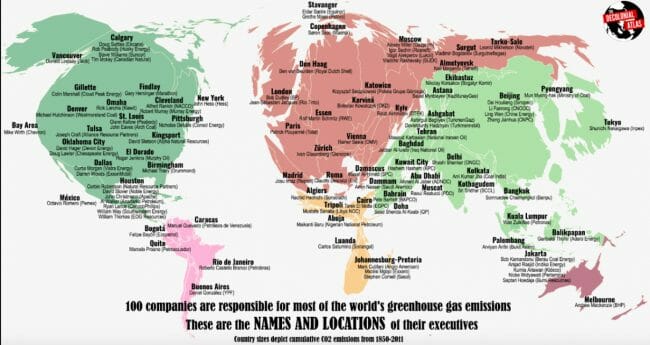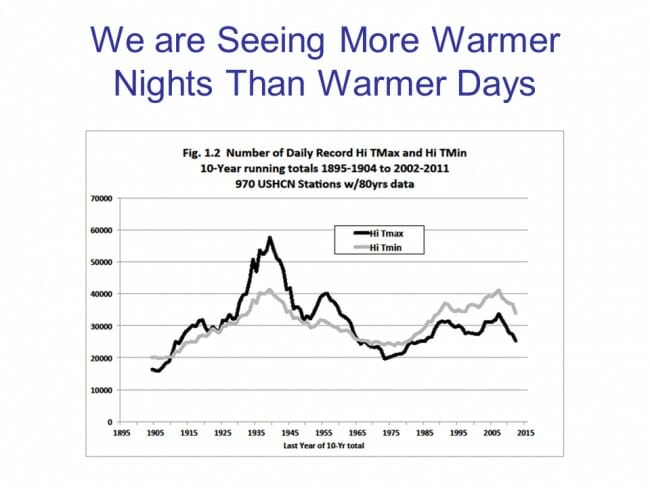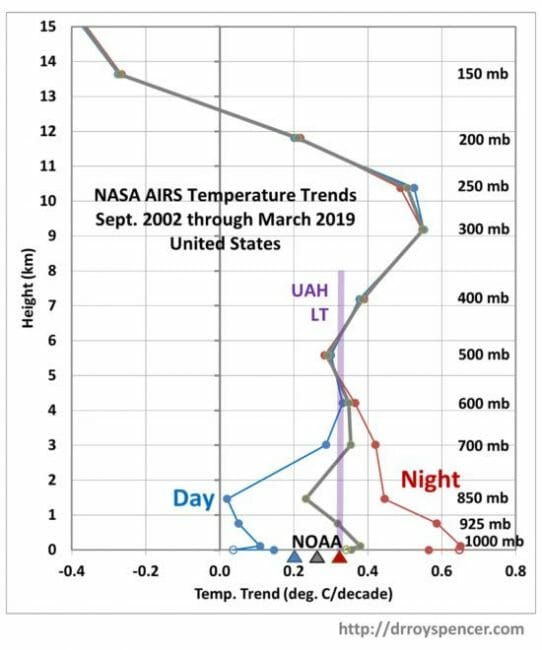A prior version of this article was published accidentally before it was complete.
I know I swore not to write about Tesla here and to confine myself to talking about Tesla on Twitter, but I can't help myself. This is the company that is going to spawn a thousand business school case studies. It is Enron but in the Internet Age with more transparency (or at least less sophistication in hiding their problems).
Over the weekend I re-read "The Smartest Guys in the Room" about the collapse of Enron. I will admit I was an Enron fanboy at the time -- I drank the Kool-Aid and totally overlooked the problems. I knew Jeff Skilling a little and worked for him on Enron when we were at McKinsey. I believed he was brilliant and was doing what he said he was doing. The crash of Enron took me years to accept, and only on my recent second reading of that book did I have the distance and objectivity to really understand it. And I realized something else -- I was the same guy back then that I criticize today. Skeptics of Tesla (including me) make fun of Tesla fanboys and their cult of Elon Musk and their belief of everything he says and their certainty he is the smartest guy in the room. I understand them because I was that guy with Enron and Skilling. Maybe Tesla is my chance to correct my past gullibility.
Anyway, just when I thought the story couldn't get any more dramatic (or weird), Elon Musk raises the bar. Apparently Tesla is now only tangentially and largely irrelevantly an automobile manufacturer. Instead, it is an autonomous ride-sharing company:
Citigroup and Goldman Sachs, who are underwriting Tesla’s latest effort to raise $2 billion in new funds, held a “broad investor call” on Thursday, where CEO Elon Musk and CFO Zach Kirkhorn answered brokers’ questions about their plans for the electric vehicle maker.
According to two invitees who attended the call, CEO Elon Musk talked up Tesla’s self-driving strategy right off the bat, expanding what he and other execs said at a recent event for investors that the company dubbed “Autonomy Day. ”
Musk confidently told investors on the call that autonomous driving will transform Tesla into a company with a $500 billion market cap, these people said. Its current market cap stands around $42 billion. He also said that existing Teslas will increase in value as self-driving capabilities are added via software, and will be worth up to $250,000 within three years.
This call was in the context of Tesla's offering this week of about $2 billion in new stock and convertible bonds. The really interesting thing about the call: Virtually 100% of the discussion on the call was about ride-sharing and autonomy, while neither word was even mentioned in the official written prospectus for the offering.
Before we can understand what the hell is going on here, and why Tesla is going all-in on a business it was barely talking about 60 days ago, we need to do some review. I want to review where Tesla was last time I wrote about them, and also discuss new Tesla news and actions over the last 3-4 months. From there, we will try to dissect what Elon Musk is doing. TL;DR: I believe Musk is doing exactly what Jeff Skilling did at Enron, chasing new business strategies based on what stories he thinks will most likely goose the stock in the short term, rather than which strategies make the most sense in the long-term for his investors.
Where I was on Tesla at year end 2018
I had a lot of criticisms about Tesla's strategy towards the end of last year (here and here, for example). But let me summarize some of the key points
- Tesla has taken what was already a risky entry into a capital-intensive industry and has made it even more expensive and risky by choosing to own both the dealer network and fueling networks for its cars -- this means it has to invest not only in auto manufacturing capacity but also in a world-wide network of sales and service centers and in a global network of charging stations
- Inexplicably, just as its production volume began ramping up in mid-2018 with the introduction of the mid-priced model 3, Tesla ramped down on its capital spending, R&D, and SG&A spending. By the first quarter of this year, capital spending was no longer even keeping up with maintenance needs. This was absolutely inexplicable for a growth company that has promised many new products in the near future (new coupe, semi truck, model Y crossover), all of which will need a plant and equipment to produce. Further, Tesla slowed investment in its sales, service, and charging networks at the exact time its fleet size exploded, leading to a lot of customer dissatisfaction
- The decrease in these expenditures was likely tied to Tesla's hard to fathom (I seem to be searching for a lot of synonyms for "inexplicable") decision not to raise capital last year. Its stock was over $350 a share and it had huge momentum from its first two profitable and cash flow positive quarters. By almost everyone's analysis, they should have raised $5 billion or more, which might have only created 10% dilution. (Instead they waited until this week after a terrible quarter and after the stock had fallen to about $235 to raise just $2 billion, barely enough even to fill their accounts payable hole).
- Tesla and Musk claimed that the growth and performance of the 3rd and 4th quarters of 2018 were harbingers of the future and he extrapolated hockey sticks from these data points. Skeptics like myself believe that this was merely a one-time bulge, that Tesla had sold through 2-3 years of demand in their order book in just 2 quarters, and that the first quarter would be a disaster now that the tank was dry. In addition, Tesla has culled its order book of all the highest margin variants where it could actually make money, leaving what remained of the unfilled orders as low-margin variants it was barely worth selling. [By the way, I figured none of this out on my own, and owe a lot to the great folks at $TSLAQ on Twitter, who bring a lot of free research to bear that made it easy to see these patterns].
- My admiration for Musk as having really shown the automobile world that electric cars can sell at high price points (and not as little sh*tboxes) and for his space entrepreneurship really ended with the SolarCity deal. In that deal, Tesla shareholders overpaid for a failing business simply to bail out Musk and his family from a sinking ship. The acquisition made absolutely no strategic sense and Tesla has done zero to try to develop it, and in fact has been slowly shutting it down from the moment it was purchased.
- Elon Musk has steadily lost any credibility he might have had by initiating product launches of products he claims are nearly ready for sale but never get introduced. Tesla got a higher level of subsidy from California based on a single suspicious battery swap demo that has never been repeated or even discussed since. Musk sold SolarCity to Tesla in part based on a flashy reveal of a solar shingle product that still has not seen the light of day. Musk had a big reveal of the Tesla semi and started taking customer deposits but there are still no clear plans for its production.
What has happened at Tesla this year
- The first quarter of 2019 was a disaster, with deliveries down despite initiation of Model 3 sales in Europe. Worse, since the Model 3 seems to be cannibalizing Model S and X sales, Tesla was not only selling fewer cars but its mix shifted to lower priced less profitable cars. It lost an enormous amount of money, and only after the conference call with analysts about first quarter results did Tesla reveal that this loss would have been far worse without a huge sale of government EV credits
- Tesla burned a staggering amount of cash in the first quarter, and was forced to pay off nearly a billion dollars in debt when the stock price did not remain high enough for the debt to convert. While Tesla's cash balance at the end of the quarter looked OK, there were two huge red flags. First, the cash barely covered a huge hole Tesla had in its net working capital. Second, given the large number of vehicles Tesla sold in its end of quarter push in the last 2 weeks of the quarter, it appears that Tesla was nearly out of cash in Mid-March and perhaps days away from a default (analysis below).
- The Tesla financial statements still include a number of unexplained oddities, including a billion dollars of accounts receivable, or about 20% of quarterly revenues. How does a company that demands payment in advance before delivery have 20% of its quarterly revenues tied up in receivables?
- Tesla announced, out of the blue, that it was closing all its retail stores and going online only. Given the drop in demand for the quarter, it was a head-scratcher as to why eliminating the sales force was going to help. The decision seemed to be almost off the cuff, as Tesla seemed surprised that they would still have to continue paying their expensive long-term mall leases. After this was revealed, Tesla partially reversed the closure decision, but no one -- including their own retail folks -- seems to know what the plan is now.
- Tesla constantly fiddled with its prices and model lineup. It cut prices several times, but also announced a small raise as well. It eliminated certain options for cars, added new ones, and then reintroduced eliminated ones. Even long-time Tesla watchers are confused about the model lineup today.
- Tesla continued to see an outflow of executive talent, including the exit of their very well-respected new General Counsel after just over one month on the job (Mr. Buttswinkas returned to his old law firm and purged Tesla from his resume). This seemed to parallel the rapid exit of an outside chief accounting officer last year who gave up millions of dollars to exit in just 60 days.
- April car deliveries stayed on the same pace as the first quarter -- ie, way worse than Tesla's guidance
- Elon Musk continued to get in trouble with the SEC, firing off production and sales guidance on Twitter that was different from Tesla's official published guidance. Mr. Musk and Tesla are still guiding to a total delivery number for the next year that is well in excess of what most anyone else looking at the first four months believes is possible
- Tesla announced a reveal of their Model Y crossover that will not go on sale until at least the end of 2020. Unlike past Tesla reveals, this one seemed hastily set up and the prototypes shown were weird. They looked more like the existing Model 3 with a few modifications than a promised crossover that could incorporate a third row of seats. Tesla asked customers to start making deposits (skeptics will argue that the whole point of the reveal was just to get some free financing from Tesla fanboys) but unlike past reveals, this one fell flat. There was apparently little interest in making deposits, though Tesla (unlike with past products) has not revealed the deposit numbers.
- Lyft went public for over $20 billion and Uber is planning a $70+ billion IPO, despite having a history of negative earnings and promising investors they may not make money for 10 years (more on this in a minute)
- After the Model Y went nowhere, Tesla set up what they called "investor autonomy day." Tesla outlined their strategy for creating a fleet of self-driving cars, and promised fully autonomous cars by the end of 2020. With these fully autonomous cars, Musk promised that Teslas would become an appreciating asset in that they earned income for their owners as autonomous taxis when the owners were sleeping. He also said Tesla would own a fleet of taxis itself, using off-lease model 3's for this purpose.
- As described at the top of the article, Tesla raised over $2 billion on verbal promises by Tesla (not echoed in the deal prospectus) that Tesla was soon to be a $500 billion autonomous taxi company
So what is Tesla doing?
Having written all of the above, I realize I have left so much out -- the product quality problems, the worker lawsuits, the autonomous driving deaths, the spontaneous car fires -- but I only have so much time. If you are interested, @teslacharts on Twitter is a good place to follow Tesla from the skeptic side. But given all this, what the hell is going on? The following is my theory.
I think in the 3rd quarter last year, Elon Musk honestly believed that the huge ramp in sales and profits at Tesla represented Tesla permanently turning the corner. He extrapolated from that growth and believed it would continue for years -- he did not see it as simply the one time working through of years of pent-up orders and demand. As a result, he put off the capital raise he should have been doing, and instead had dreams of taking the company private and getting away from all the scrutiny by analysts and shorts that seem to irritate him. Thus was launched the ill-considered "420" tweet when he claimed he had funding secured for a go-private transaction at $420 a share, when in fact this was an outright lie. Once the SEC stepped in to investigate, a new funding round was almost impossible.
Then, in the first quarter, reality hit Tesla in the face. For all their public optimism, Musk had to see that the demand he expected was not there and Tesla was likely running low on cash. I think Musk had convinced himself the convertible bonds due in the first quarter would surely convert (and would have at the third quarter stock price) but now Tesla was doing the opposite of raising capital, it had to pay off debt. Cash was going out the door and demand was weak. What to do?
Musk has a demonstrated pattern that whenever he needs the stock price to be higher, or he needs to sell stock, or he needs some other kind of favorable financial outcome, he will do a new product demo. It worked for battery swap and the solar shingle and the model 3 and the semi, so it would work again. The model 3 reveal had collected hundreds of millions of dollars of cash in the form of deposits. That's what he needed now. The problem is, they didn't have a prototype to show. I believe Musk had the company hastily create a Model Y prototype built on top of a model 3. It did not really have to work, it just had to be something he could talk about. Interestingly, his VP of engineering quit at exactly this time, for reasons unknown -- was their some internal dissention about this Y prototype?
Anyway, the Model Y reveal was essentially a flop, and likely garnered few deposits. Certainly not enough to fill in Tesla's growing cash hole. And by Mid-March, Tesla may have been almost out of cash. Tesla says it delivered half its vehicles for the quarter in the last 10 days of March, so about 31,500 were delivered in those hectic days. At an average price of $50,000 each that would mean Tesla brought in nearly $1.6 billion in cash those last 10 days (this is conservative, may have been more if the average price was higher). But they only had $2.2 billion at the end of the quarter, meaning Tesla was scraping bottom in mid-March, particularly since hundreds of millions of that cash is restricted and not supposed to be spent.
Somewhere in this period of March-April, after his usual product reveal trick with the Y did not work, I think Musk came to the conclusion that the Tesla car business as currently defined was not going to work. Or, more accurately, it was never going to make enough money to support its sky-high stock valuation. I have always said that Tesla would make a fine $10 billion niche car company, but nothing about it justifies a $50 or $60 billion valuation. But at this point Musk can't accept a $10 billion company, even though that would ostensibly still leave him a very rich man. But like Ken Lay at Enron, Musk has borrowed against at least half his Tesla stock and a falling stock price could lead to financial death by margin call (Musk, for some reason, also mortgaged all his multi-million dollar homes last December). His other investments are also struggling -- SpaceX has been unable to attract the capital it needs of late and Musk has poured a lot of money into the Boring company, an absolute embarrassment of a company that helps refute, in my mind, his "smartest guy in the world" rep.
As Musk looked around for a way to save the stock valuation, the Lyft and Uber IPO's must have had an influence. Uber is losing as much money as Tesla and folks are talking about it IPO-ing at a market cap of $70 billion. What if Tesla could call itself a ride-sharing company, only better. Wouldn't that garner Tesla an even higher valuation?
So I see investor autonomy day and Musk's autonomy soliloquy on the capital raise call the other day as evidence that Musk has, in his mind, capitulated on auto manufacturing and has decided the way to keep Tesla's stock price up is to promise it will -- in just 20 months -- sell fully autonomous vehicles and be making tons of money selling taxi rides. In other words, it is a robotaxi company that happens to be backward integrated into manufacturing the taxis.
I am skeptical for a number of reasons.
- This reeks of desperation and capitulation. If Dell says they are going to reinvent themselves as a search engine, it's time to sell the company
- There is no evidence that Tesla can achieve full autonomy by end of next year and a lot of reasons to think they can't. Most experts think full autonomy is decades away, and when they rank companies on their progress on autonomy, Tesla is usually near the bottom (e.g here). Waymo and GM, the leaders, often go thousands of miles between driver interventions. Tesla is hundreds of times worse. Even over the short course at Investor Autonomy Day (where Tesla likely trained and practiced in advance) investors reported a driver intervention was needed. Now imagine the same car with no driver. In snow with the road markings obscured. Driving through construction where new routes are confusingly marked off with cones.
- The basic business numbers Musk throws around are absurd. Just as one example, he extrapolates from current ride-share prices and assumes Tesla will make a ton of money because they will get the same price but not pay the driver. But this is crazy. If Tesla suddenly throws a million taxis into the rideshare supply equation, rates are going to fall. Already, since 2012, Uber reports its average fare per mile has been reduced by over half. If everyday folks are having their cars drive autonomously at night to earn extra money, the fee per mile is going to be competed down close to the cost per mile of operating the vehicle (or even lower, since most folks underestimate their all-in cost per mile on their vehicle). Musk is basically proposing to commoditize the market but still reap premium margins. Not going to happen.
Warning
Note that this article is simply my analysis and in some cases my guesses. I think the story holds together but I can be wrong. I am short TSLA via put options but note that this is a modest investment that is a small percentage of my portfolio. Tesla is a dangerous stock to short. Right through the bad news, individual investors at RobinHood have been loading up on the theory they are buying the dip. 20,000 people added TSLA to their portfolio at RobinHood just AFTER the horrible first quarter report. Be very careful
Bonus -- Tesla's Largest Mistakes
No matter what happens, Tesla will always be remembered as the company that brought EV's mainstream. But like any tragedy, they have made some fatal mistakes. This is my attempt to get out ahead of future business school cases and rank their largest mistakes:
- The Model 3. Tesla could have been a profitable luxury car maker but with the Model 3 tried to go for the low to mid end of the market. But it does not have the manufacturing expertise or cost position (it assembles in California, for God sakes) to pull it off. The quality problems it encountered have reduced its brand luster, and the volumes of cars have overwhelmed its service and charging networks. Investments in the Model 3 have distracted it from real refreshes of its S and X and in fact the Model 3 has cannibalized those more profitable cars. A higher end crossover would have been a better choice
- No third party dealers. Tesla chose to bring the sales and service function in house. This was a mistake. Not only did it eat up capital, but it robbed it of valuable marketing partners such as Penske that could have really helped its sales ramp.
- No 2018 capital raise. Rather than tweeting 420, Musk should have been raising capital based on its third quarter results. The money was there to be had and Tesla needed it. $5billion at least could have been raised with little dilution effect
- SolarCity Purchase. This was a complete sham to bail out the Musk family and friends. Did absolutely nothing for Tesla except drain billions of valuable capital
- In-house Manufacturing. Musk often says he wants to be like Apple, but Apple is a design company. It does not manufacture and for quite a while did not do its own retail. Tesla would have been better off finding a manufacturing partner rather than manufacturing itself in the highest cost location in the country
- No Charging Partner. I think Tesla had to build out its charging network at first to eliminate one of the greatest consumer barriers to purchasing an EV. But they should be partnering to share the costs. Instead, Tesla still thinks of its charging stations as a competitive moat. But as other car makers form consortia for charging networks based on faster charging technologies, Tesla is stuck with an expensive network that needs upgrading. Its more of an anchor now than a moat
2nd Bonus -- Another Musk parallel if you are tired of Enron comparisons
Even more than Skilling and Enron, the person Musk most reminds me of is Ferdinand de Lesseps, whose attempt at building a French canal in Panama ended in spectacular failure. I highly recommend the book "Path Between the Seas" for folks who want the whole story. When I have time, I may post on the parallels. I presume Tesla critic @ElonBachman would agree since he uses de Lesseps' picture as his twitter icon but I have never seen him discuss it.



